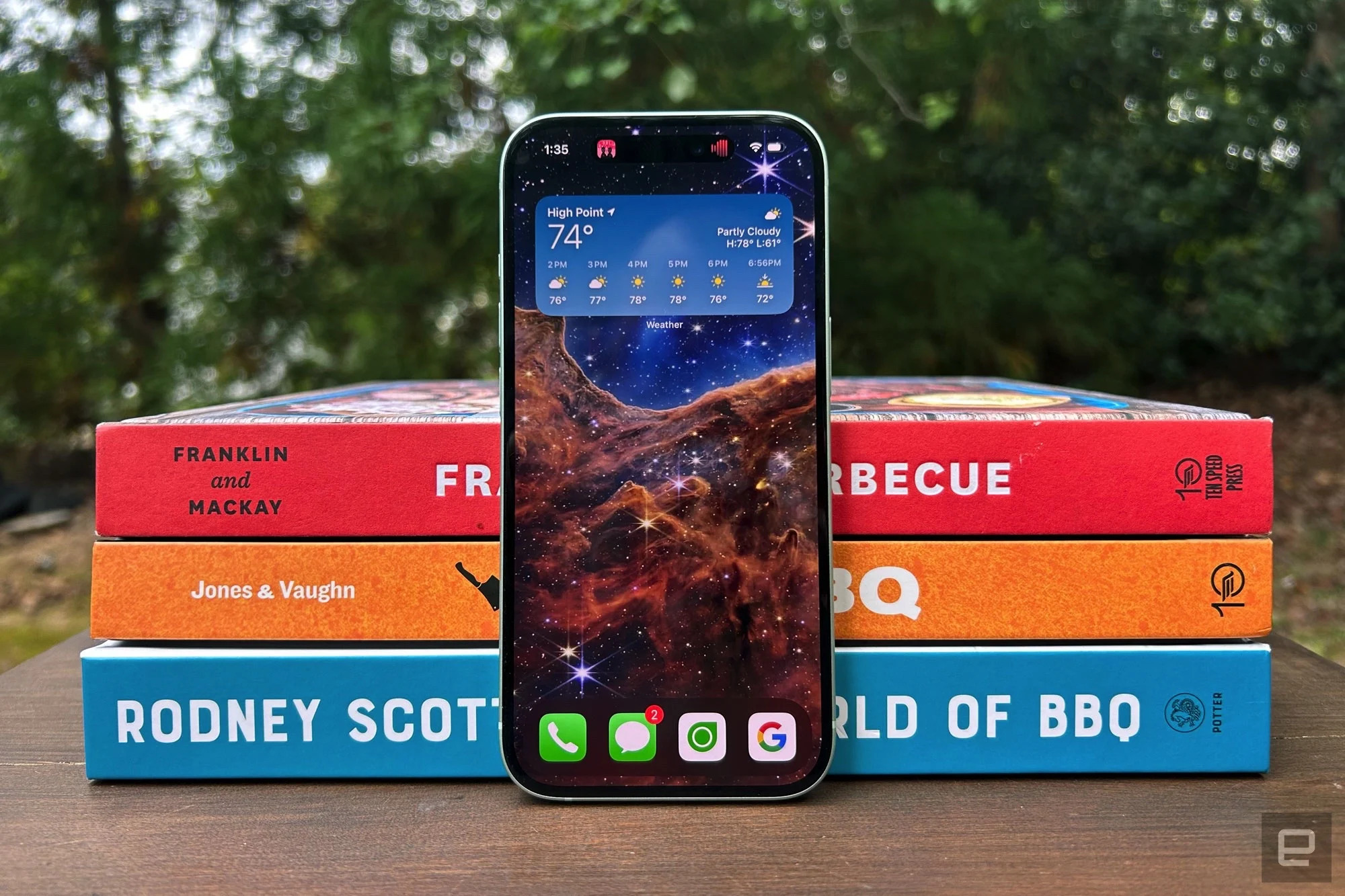The typical pattern with new iPhones is that they tend to be somewhat unexciting, except for the more expensive Pro models, which usually get the spotlight with all the latest fancy features. I’m referring to the standard iPhone versions that are well-suited for most users. Apple’s tradition has been to adopt a “trickle-down” approach for its primary phone line, incorporating components and features from the previous year’s Pro models in the annual update. That’s largely what we’re seeing in the case of the iPhone 15, which starts at $799. However, the combination of these inherited features, a revamped camera, and the transition to USB-C make this year’s regular iPhone a compelling upgrade choice.
Design
Apple has refrained from making sweeping alterations to the design of the standard iPhone for quite some time, instead opting for subtle adjustments that only keen observers would discern. With the iPhone 15, the company retained the aircraft-grade aluminum frame but added a more contoured edge, enhancing the device’s ergonomics. However, this improvement is best appreciated when the phone is used without a protective case.
Another notable change in the iPhone 15 is the adoption of “color-infused” glass with a matte finish on the back, a first for smartphones, according to Apple. The primary concern here lies in the color choices. Apple offers black, blue, green, yellow, and pink options, but these colors lack the vibrancy of previous iPhone generations and appear rather subdued in real life.
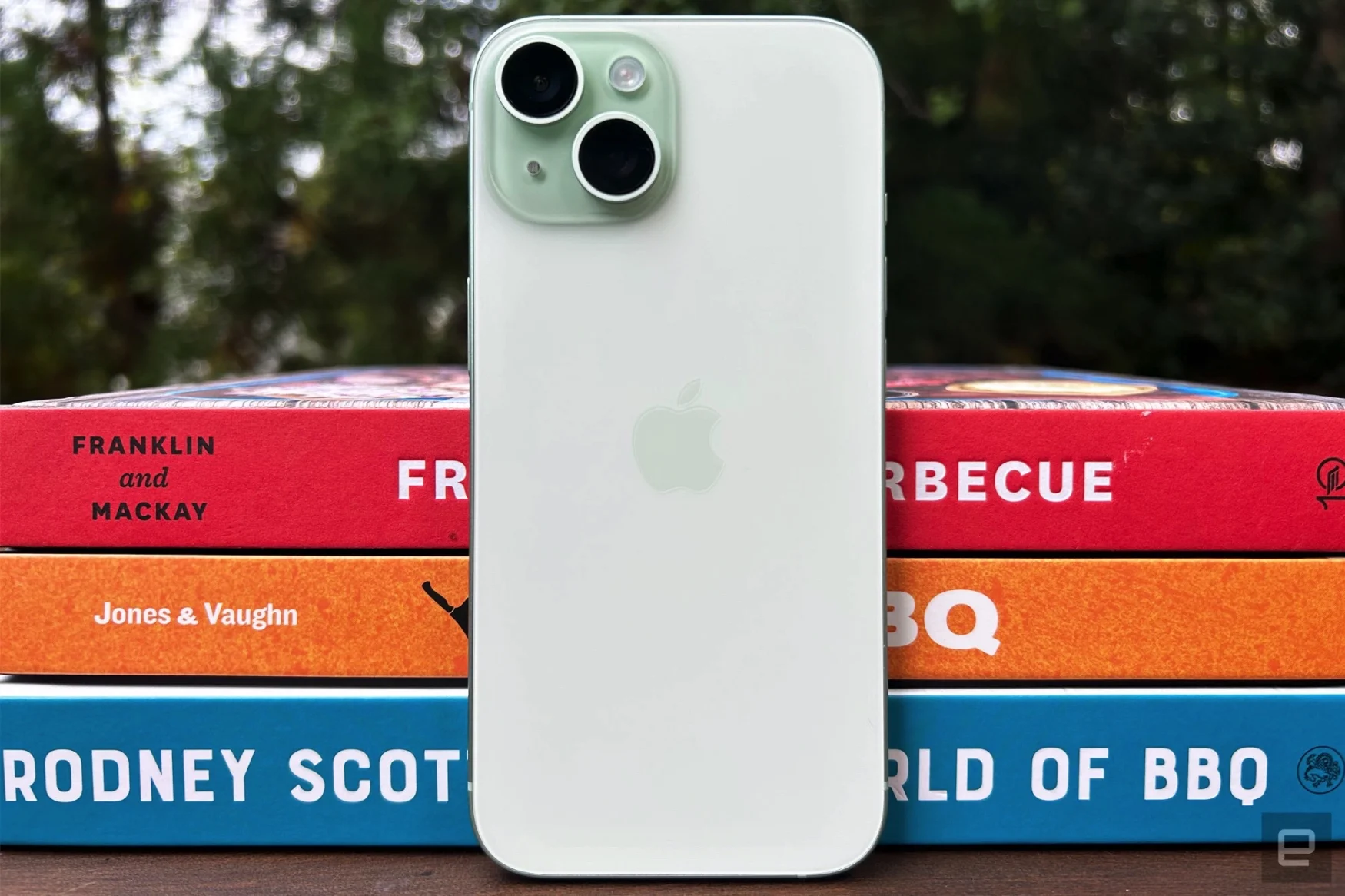
This might not pose an issue for those who favor such muted shades, but it may not suit everyone’s preferences. The color options exclude white, gold, or silver, leaving only the black variant, which is more akin to a dark gray if you prefer a less pastel appearance. In terms of durability and water resistance, the iPhone 15 maintains the same standards as its predecessor, featuring a Ceramic Shield display for added protection and boasting an overall IP68 rating.
While the iPhone 14 distinguished itself by eliminating the SIM tray, this year’s model introduces a notable change at the bottom edge. Apple has finally made the transition to USB-C, adopting a slightly larger and more pill-shaped port compared to the previous Lightning jack. Notably, the SIM tray remains absent, as last year’s model introduced the era of the eSIM, simplifying number transfers to new devices and offering the option for multiple lines on a single device.
Display
Apple’s decision not to upgrade the iPhone 14’s display last year was disappointing, but while the improvements on the iPhone 15 may not go as far as some would hope, they do offer some valuable enhancements. The iPhone 15 features a new Super Retina XDR display, offering a resolution of 2,556 x 1,179 at 460 pixels per inch (2,796 x 1,290 on the 15 Plus model). This isn’t a significant departure from the iPhone 14, which also had a Super Retina XDR panel. However, Apple has boosted the peak brightness to 2,000 nits and peak HDR brightness to 1,600 nits, both of which represent improvements over the previous model. As expected, colors remain vibrant, and you’ll enjoy sharp detail, as has been the norm.
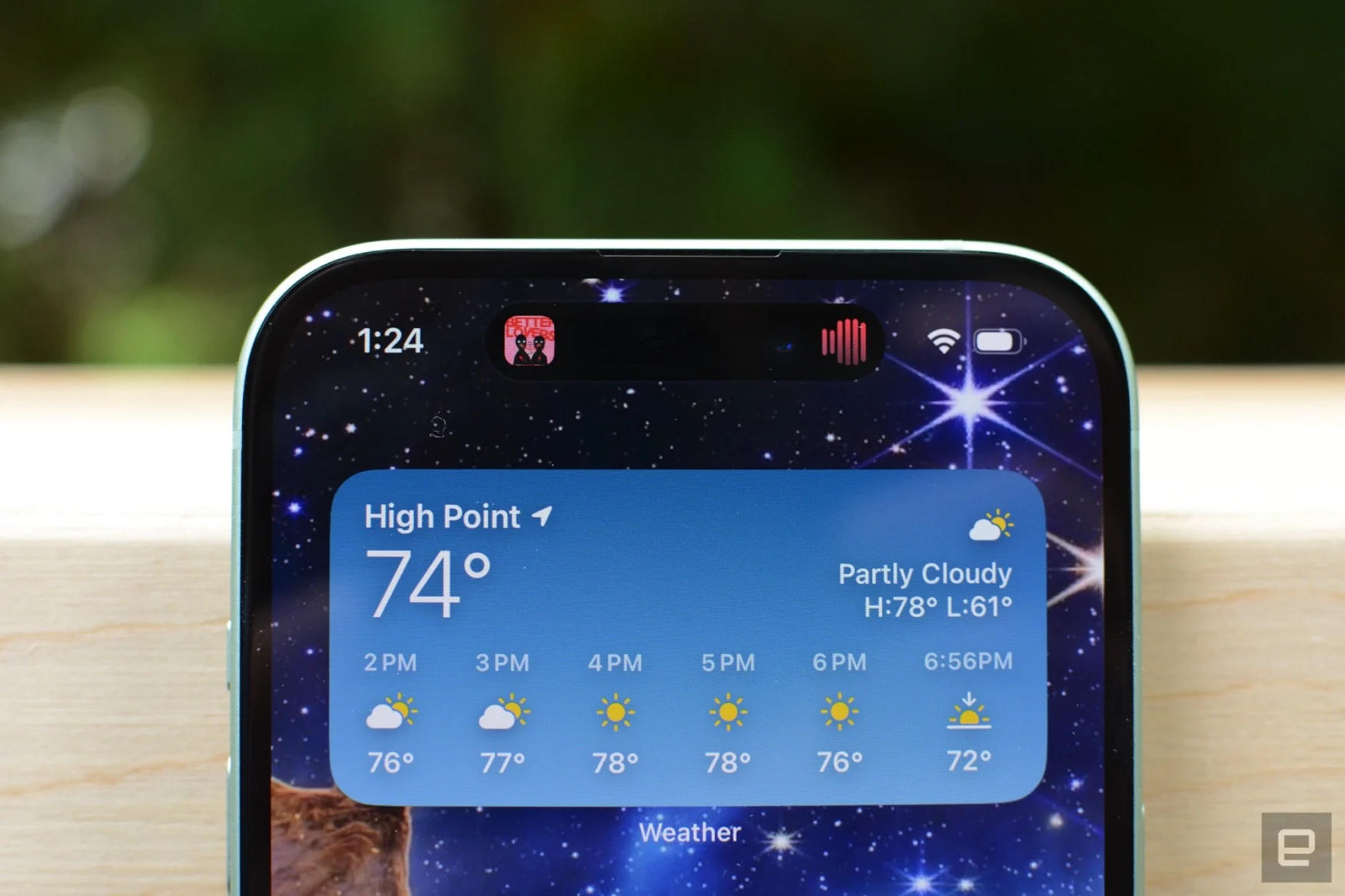
Regrettably, the iPhone 15 series continues to feature a 60Hz refresh rate, with the higher refresh rates reserved for the Pro models. While those who haven’t experienced a 120Hz display may not find it essential, it’s worth noting that other manufacturers have incorporated higher refresh rates into their base model phones. For instance, the Pixel 8 and Galaxy S23 both boast 120Hz displays. As pointed out by my colleague Cherlynn Low last year, transitioning from a Pro model iPhone to the “regular” version can make the display’s choppiness during scrolling apparent.
Additionally, the always-on display remains exclusive to the iPhone 15 Pros, meaning you won’t have the constant presence of time, widgets, and wallpapers on the iPhone 15.
The most notable change to the display is the introduction of the Dynamic Island feature, which first appeared on the iPhone 14 Pro last year when Apple replaced the notch with a practical, informative area around the front-facing camera. Just as it does on the Pro models, Dynamic Island on the iPhone 15 offers convenient access to alerts, Live Activities, and background-running apps.
When playing music, you’ll see small album art alongside an audio waveform or an icon indicating where the audio is being streamed (e.g., HomePod or a speaker). A long press provides playback controls similar to what you typically find on the lock screen, conveniently docked at the top of the display. Live Activities can display information such as flight statuses or Lyft arrival times, and Apple has introduced a dedicated API to allow developers to expand how their apps utilize the Dynamic Island. Coming from an iPhone 14, I’ve appreciated having this additional information and controls just a long press away. It’s one of the features trickling down from the Pro models this year, enhancing user convenience.
Cameras

One of the most significant enhancements on the iPhone 15 comes in the form of its revamped camera system. Apple has traded the 12-megapixel dual-camera setup for a more robust 48-megapixel configuration with a quad-pixel sensor. The company has introduced a photonic engine that combines the low-light capabilities of 12MP images with the large quad pixels found in the 48MP version, resulting in the default setting of a 24MP image that boasts enhanced clarity and superior performance in low-light conditions. Additionally, there’s a new 2x optical-quality telephoto preset, providing the iPhone 15 with three preselected zoom options.
The standout feature of the new camera is its ability to capture portraits in regular photo mode. Whenever the iPhone 15 detects humans, cats, or dogs prominently in the frame, it automatically captures depth information. This allows you to apply the portrait mode effect after taking the shot using the editing tools in the Photos app, eliminating the need to select it before capturing the image. An “f” icon will appear whenever depth information is being captured, and tapping it grants you the option to preview and activate portrait mode before taking the photo. For photos you’ve already captured, the editor will display an unmistakable portrait button for all shots with stored depth information. Furthermore, there’s a convenient shortcut to activate portrait mode for compatible images when viewing a single photo, eliminating the need to access the full editing view.
Performance and battery life
The iPhone 15 inherits the A16 Bionic chip from last year’s Pro model, which powers all of its advanced features, including Dynamic Island, improved outdoor display brightness, and the 48MP main camera. The A16 Bionic chip boasts a six-core CPU that consumes 20 percent less power than the A15 Bionic in the iPhone 14, and a five-core GPU with 50-percent more memory bandwidth than the previous version. Furthermore, the A16 Bionic’s 16-core neural engine provides the extra horsepower for features like the updated portrait mode, live voicemail, and enhanced autocorrect.
In everyday use, the iPhone 15 demonstrates swift and smooth performance, effortlessly handling tasks like Instagram, Gmail, Apple Music, calls, texts, and even YouTube TV streaming, all while connected to an Apple Watch. The phone rarely exhibited any signs of overheating, with the only instances being during multitasking while streaming video or live TV via picture-in-picture. Even then, the iPhone 15 maintained a comfortable temperature.
Apple has equipped the iPhone 15 with a second-generation Ultra Wideband chip that enables Precision Finding. Additionally, this chip has been extended to work with Find My friends, allowing for precise directions in dense crowds. To utilize this feature, both parties must share their locations, which can be disabled at any time. Find My can also notify your friend that you’re looking for them. Although I haven’t had the opportunity to test this with another iPhone 15 user yet, it appears promising, especially for events like music festivals where constant “Where are you?” texts are common.
Furthermore, Apple continues to offer safety features, including satellite-powered roadside assistance and emergency SOS, introduced last year. These services are complimentary for two years with the iPhone 15, enabling you to contact services like AAA via text when you’re in an area with no cellular signal. The iPhone 15 also includes car crash detection and can notify your emergency contacts through the Health app. This crash detection feature functions with emergency SOS via satellite, ensuring that first responders are contacted even when cellular or Wi-Fi connections are unavailable. Fortunately, I haven’t had to use these features, but they provide valuable peace of mind.
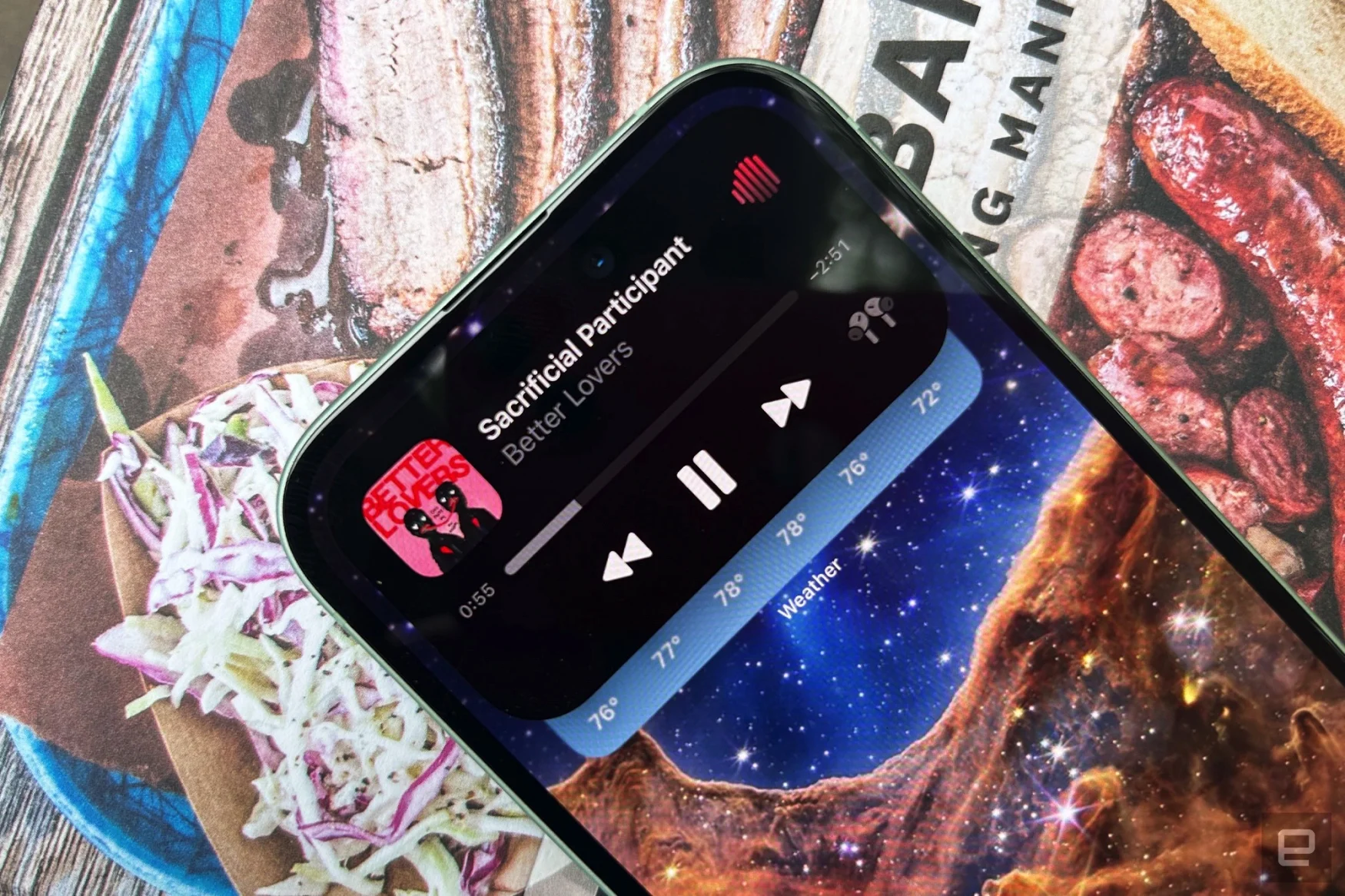
The transition to USB-C in the iPhone 15 is a much-needed and welcome change, albeit one that has been long overdue. This shift not only provides a more universally compatible connection, aligning with the iPad and Mac, but it also allows you to charge various Apple devices like your Apple Watch, AirPods, and other compatible gadgets using the iPhone 15. This feature came in handy on several occasions, especially when my Apple Watch Series 7 was running low on battery. It has also proved convenient for topping up my AirPods Pro while on the go if I happened to forget to charge them before leaving home. Additionally, it’s a relief to streamline my travel accessories by reducing the number of cables I need to carry.
However, one disappointing aspect of the USB-C implementation is that Apple has restricted data transfers to USB 2.0 speeds, which max out at 480 Mbps. While it’s unlikely that you’d use your phone primarily for transferring large files, this limitation can be a hindrance when it comes to tasks like transferring data to a new phone. Given the premium price of the base iPhone, a faster data transfer connection would have been a welcomed improvement.
Regarding battery life, Apple’s claims of “all-day” usage remain accurate. Even after a day that started at 7AM, the iPhone 15 still had 28 percent battery life remaining when I plugged it in just before 1AM, despite some fairly intensive Instagram scrolling between 8PM and midnight. Even during a music festival where I used the phone extensively, it never dropped below 25-30 percent. This translates to over three days of running in low-power mode for more than 15 hours while actively capturing a combination of Instagram Stories, photos, and videos. In both scenarios, I had an Apple Watch and a Dexcom continuous glucose monitor connected and in constant use.
Apple states that a 20W power adapter can charge the iPhone 15 in approximately 30 minutes. The phone continues to support MagSafe wireless charging with compatible accessories. Despite the transition to USB-C, the charging capabilities remain unchanged from the iPhone 14. So, if you were hoping for faster charging, that enhancement hasn’t materialized yet.
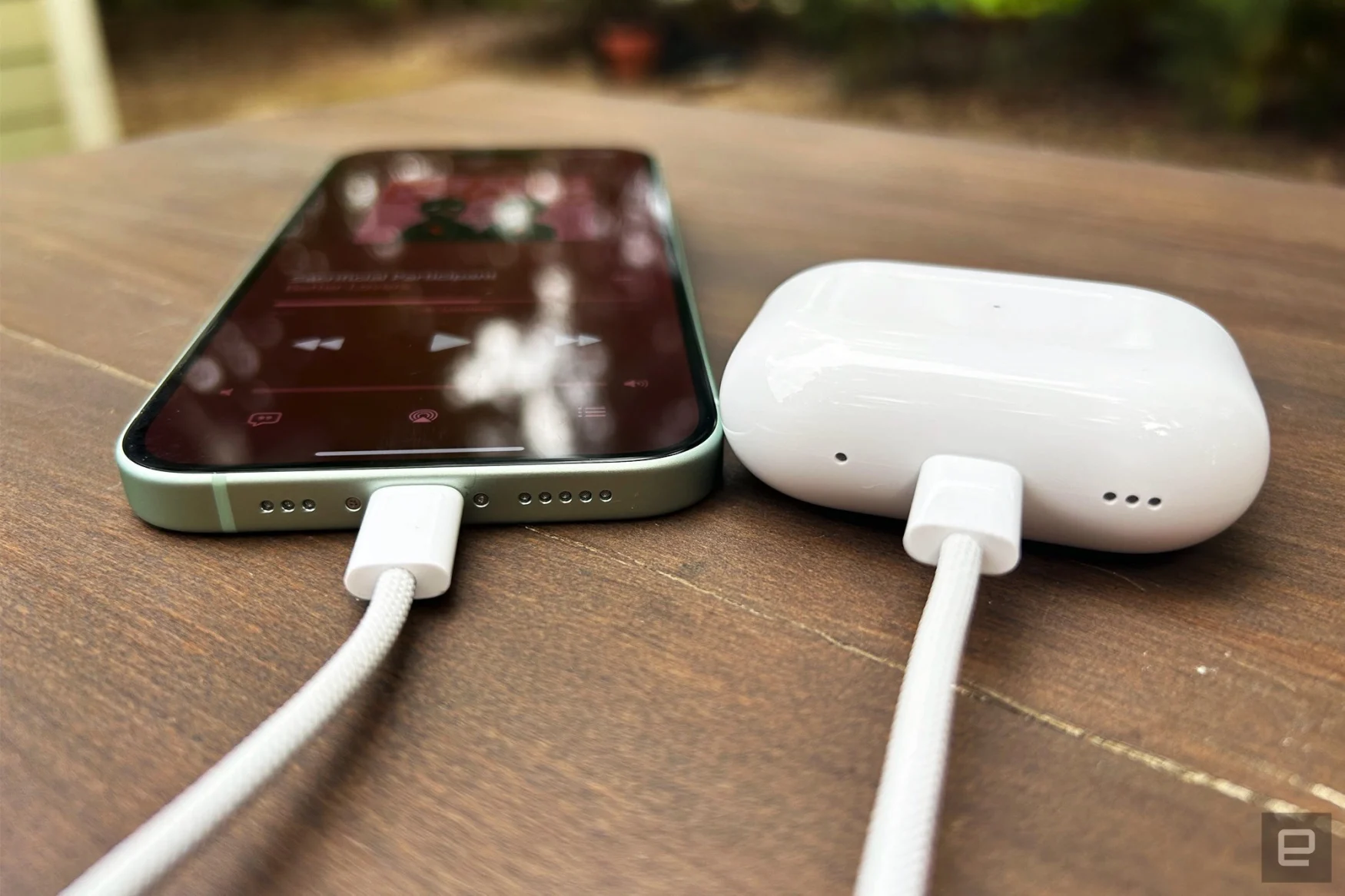
Wrap-up
Apple has introduced enough improvements with the iPhone 15 to justify considering it as a worthwhile upgrade this year. While iOS 17 can certainly inject fresh life into older phones, even those who purchased an iPhone 14 last year might find it tempting to make the switch. This wasn’t necessarily the case in previous years.
The overhauled camera performs admirably, delivering higher-quality images when you need them, and the Dynamic Island feature is genuinely practical. The inclusion of USB-C, even with its limitations, is a positive addition. Considering that most people tend to use a protective case for their phone, you can likely tolerate Apple’s color palette experimentation if the available hues don’t particularly excite you. While it’s satisfying that the iPhone 15 represents a more substantial upgrade than what we’ve seen in recent years, there’s a hope that a complete redesign is on the horizon.

